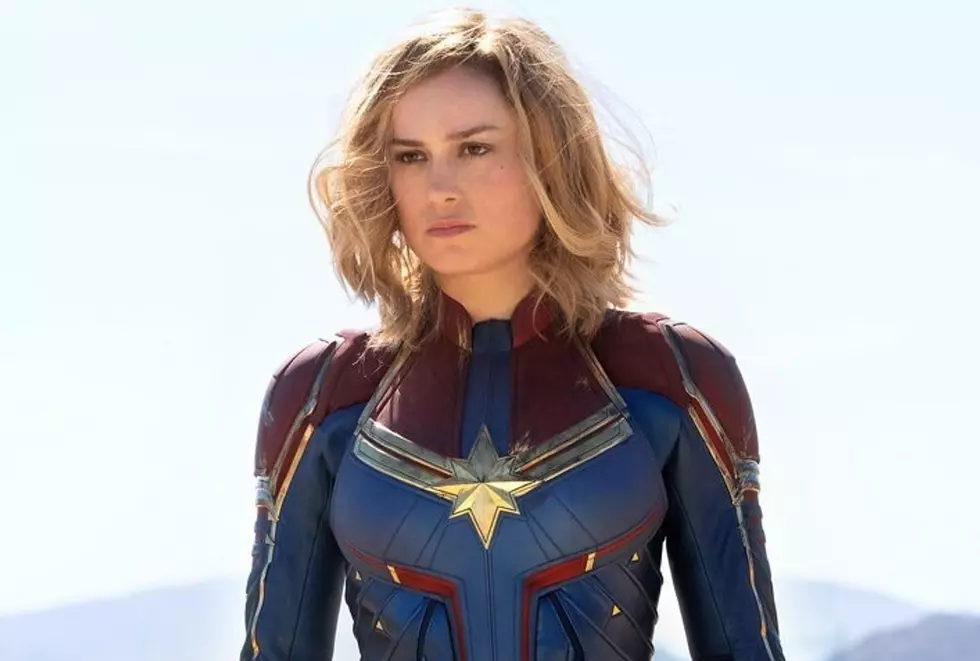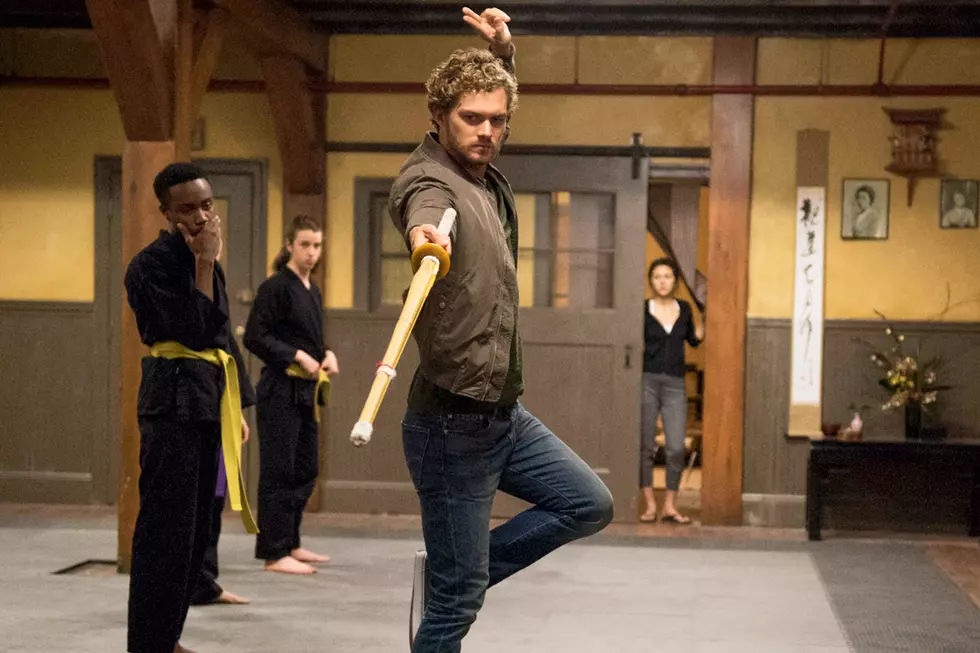
This Woman, This Warrior: Celebrating Carol Danvers, Captain Marvel
Today, Captain Marvel/Carol Danvers is one of the greatest heroes in the Marvel Universe, one of the company's most powerful and popular characters. She's the star of her own best-selling series, she's a high-profile member of The Avengers and The Ultimates, her visage adorns merchandise from apparel to action figures, and she's a major part of the "Phase Three" expansion of Marvel's movie universe.
But it hasn't always been like this. Since she made her first appearance in a supporting role to a second-string hero, Carol Danvers has walked, flown, and fought her way along a twisting and often-confusing path.
On December 12, 1967, Marvel Super-Heroes #13 hit newsstands, featuring the second appearance of a new space-spanning character, an agent of the alien Kree empire whose given name was "Mar-Vell" but ended up being referred to as Captain Marvel for the sake of convenience (and so Marvel could trademark a moniker that was currently languishing in copyright limbo). In this sophomore outing, writer Roy Thomas and artist Gene Colan tell of Mar-Vell taking on a human identity in order to gather information about the culture of earth, and --- while investigating the military installation at Cape Canaveral --- meeting the base's head of security: Air Force Major Carol Danvers.
Captain Marvel was given his own eponymous title two months later and while Ms. Danvers would go on to serve as both dramatic foil and romantic interest for the headlining hero, neither her portrayal nor the series itself quite found their feet. As different creative teams tried to come up with compelling take on the Captain, Carol was often reduced to a generic damsel in distress, another female non-entity of the casually sexist Silver Age.
By the time of 1969's Captain Marvel #17, she literally only appeared as a prop, with the villain of the month employing a bomb made in her image.
The following issue, Captain Marvel #18, saw Carol's farewell to the series. In this issue, she was kidnapped, knocked into a Kree Psyche-Magnetron, blasted by a laser, and exited stage left, unconscious, as Mar-Vell rescued her from an exploding underground cavern and took her to receive medical attention.
For the next few years, Carol Danvers existed on the edges of the Marvel Universe, making appearances in Avengers and other titles, serving as an all-purpose bit player until, in 1976, Marvel decided the time was right to launch a title that reflected the rising visibility of feminism in mainstream culture.
Ms. Marvel #1 landed on newsstands at the tail end of that year, and in that issue writers Carla Conway and Gerry Conway, and artists John Buscema and Joe Sinnott, revitalized Carol Danvers, remaking her as a superhero in her own right. Here, it was revealed that Carol had resigned from the military and begun a new career as a writer and editor, launching a new women's magazine for J. Jonah Jameson. At the same time, readers learned she was suffering from amnesia and leading a double life; she had mysteriously gained the Kree-based abilities of Captain Marvel and begun operating as a costumed crimefighter, with neither her heroic nor civilian persona aware of the other. (It would be explained many issues later that her superpowers were an unexpected side effect of the aforementioned Psyche-Magnetron accident in CM#18.)
The Ms. Marvel series would run for two years, and a sequence of stories by Chris Claremont and Dave Cockrum went a long way toward turning Carol into a fully realized character, building her backstory, fleshing out her motivations, and replacing her original Mar-Vell inspired uniform with a new, original costume.
Unfortunately the title was cancelled after 1979's issue #23, and Carol Danvers was once again cut adrift. The following three decades were not kind to the character. She joined the Avengers, but in a notoriously noxious story, she was kidnapped, raped, and impregnated by an other-dimensional time-shifter, and received no sympathy from her teammates. She returned to earth, only to lose her powers (and many of her memories) in an encounter with the X-Men's Rogue. She was then abducted and experimented on by the Brood, gaining a new set of cosmic powers in the process, and taking on a new identity as Binary. Danvers left earth behind to explore space with The Starjammers --- then upon her return, was possessed by The Shadow King and killed by Magneto.
Upon coming back to life (because comics), she helped Quasar save the sun, but in the process exhausted most of her Binary powers. Trying to come to terms with her newly reduced abilities, she holed up as Avengers Mansion and sunk into alcoholism while rebranding herself yet again, this time as Warbird, and attempting to remake herself as a hero. Two full-fledged Avengers court-martials (one for dereliction of duty and alcohol abuse, one for killing an enemy in the heat of combat) followed.
Danvers next took a job with SHIELD, worked alongside Iron Man in the first Civil War, and became leader of the Mighty Avengers team in the Civil War aftermath and subsequent Skrull invasion. In the process of these events, her motivations and emotions seemed to be constantly in flux, governed less by any internal throughline than by the whims of whichever creative team had control of her at any given moment. She reclaimed her former identity as Ms. Marvel, but beyond the costume and name, she bore little resemblance to the liberated hero she'd been in the '70s. It seemed that increasingly, Carol had become little more than a device to advance the plots, with her powers and personality simply a matter of convenience.
In 2012, everything changed. A brand new Captain Marvel series launched, this time with Carol Danvers as star of the show. "Captain" was the rank and title that she had earned, and with writer Kelly Sue DeConnick guiding her, and clad in an iconic new costume designed by Jamie McKelvie, she had become the star she'd always threatened to be.
No more "Ms.", no more support role, no more second-string status. This was Carol Danvers, Captain Marvel, an identity that reflected her readership and inspired passionate devotion from fans. DeConnick's take on the character tied together the threads of the previous years, making Carol's story a compelling tale of triumph over adversity, and making Carol a believably complex and multi-faceted figure.
Almost instantly, Captain Marvel cosplay began popping up conventions, and a devoted group of fans known as "The Carol Corps" built a wide-ranging and tight-knit network of online and real-life communities, sharing stories, creating craft projects, working on common causes, discussing cultural and political issues, and forging deep friendships, all brought together by their connection to a comic that wasn't just about another "strong female character", but that portrayed an identifiable person working to better herself, and becoming a true hero in the process.
When DeConnick moved on after a groundbreaking three-and-a-half-year run on the character, other creators took up the torch, helping Carol climb to new heights and reach new readers.
So, today, on the anniversary of her first appearance in 1967, we celebrate the impact, legacy, and continued inspiration of Carol Danvers --- a Captain Marvel for all of us, and a character grounded in a convoluted past, but one who never stops looking to the stars.
More From ComicsAlliance




![Bond After Brexit: Kieron Gillen Declassifies ‘James Bond: Service’ [Interview]](http://townsquare.media/site/622/files/2017/03/Service_McKelvie-feat.jpeg?w=980&q=75)



![Unsinkable Ship: All The Girls Love Kitty Pryde (Especially Illyana) [Love & Sex Week]](http://townsquare.media/site/622/files/2017/02/kp_featured.jpg?w=980&q=75)
